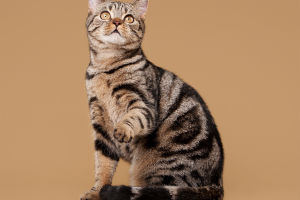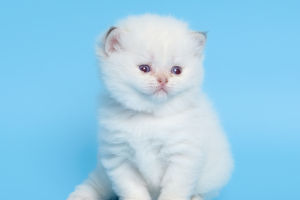If you’re a cat owner, you’ve probably noticed how much your cat loves jumping into boxes.
Whether it’s a large shipping box or a small cardboard container, cats can’t seem to resist the lure of a cozy, enclosed space.
But what is it about boxes that makes them so irresistible to our feline friends? Science and feline psychology shed some light on this quirky behavior. Here’s a closer look at why cats love boxes and what these mysterious containers mean for their well-being.
1. Boxes Provide Security and Comfort
Cats are naturally drawn to safe, enclosed spaces where they can observe their surroundings without being easily seen. In the wild, cats are both hunters and prey, so they instinctively seek places where they can feel secure. A box offers walls on all sides, giving cats a sense of control over their environment. This enclosed space helps reduce anxiety and makes them feel protected, allowing them to relax more fully.
Studies have shown that cats who have access to hiding spaces like boxes are less stressed, especially in new or unfamiliar environments, such as shelters or new homes. By curling up in a box, cats create a comforting retreat where they can feel safe from potential threats.
2. Stress Relief and Relaxation
Research supports that hiding can be a stress-relieving activity for cats. A box serves as a “safe zone” where they can escape from anything that causes them stress, like loud noises, new visitors, or other pets. When cats feel threatened or overwhelmed, retreating into a box helps them regulate their stress levels.
This behavior is observed even in shelters, where providing cats with hiding spaces can significantly reduce their anxiety and help them adjust to new surroundings. So if your cat seems to spend a lot of time in a box, it might be their way of unwinding and destressing.
3. Warmth and Insulation
Cats have a higher comfort range in terms of temperature, preferring environments around 86-97°F (30-36°C). A box, especially a cardboard one, helps to retain body heat, creating a snug and warm “den” for them. The insulation provided by the walls of a box means that your cat can conserve more heat, helping them feel cozy and comfortable, even in cooler indoor temperatures.
For cats, a box serves as a private, insulated place to warm up. This makes them ideal spots for a cat nap, especially in the colder months when they’re naturally seeking out warmth.
4. Boxes Simulate the Hunting Experience
Cats are natural hunters and often engage in “ambush” behaviors, hiding and then pouncing. A box offers a great hideout for a cat to crouch and observe its surroundings. From within their box, they can hide and prepare to jump out at a toy, another pet, or even you! This satisfies their predatory instincts in a safe, controlled way that offers mental and physical stimulation.
By hiding in boxes, cats can engage in playful behaviors that simulate the stalking and pouncing they’d do in the wild. It’s part of their nature and an essential way for them to keep mentally engaged.
5. Curiosity and Exploration
The saying “curiosity killed the cat” has some truth—cats are incredibly curious animals and tend to investigate new objects in their territory. A new box is an instant curiosity trigger. Cats are naturally drawn to new shapes, smells, and textures, and cardboard boxes offer plenty of sensory experiences for them to explore. They’ll sniff, scratch, chew, and even lick a box as they investigate.
The box’s structure provides something different and intriguing in their environment, which helps satisfy their need for mental stimulation and exploration.
6. Privacy and Independence
While cats may enjoy your company, they’re also independent creatures who appreciate alone time. Boxes offer a place where they can have a break from social interactions and recharge. When a cat is in a box, they feel they’re in a private space where they won’t be disturbed, giving them the opportunity to relax or sleep without interruption.
For cats that live in busy households or homes with other pets, a box can offer the perfect hideaway to relax and enjoy some solitude.
7. Opportunity for Play and Fun
Cats are playful animals, and a box can be an excellent playground. They can hide, pop out, scratch, and even tear apart cardboard boxes for fun. The simple act of exploring, scratching, and lounging in a box provides hours of mental and physical stimulation, which is especially important for indoor cats who may have limited play options.
By creating an environment that mimics some of the things they’d encounter in the wild, boxes help keep cats entertained and engaged.
8. Marking Their Territory
Cats use scent glands on their cheeks and paws to mark their territory, and boxes can quickly become part of their claimed space. Rubbing against or scratching a box helps a cat mark it with their scent, reinforcing a sense of ownership. This behavior strengthens their bond with their surroundings and gives them an added sense of security.
A cat that regularly returns to a box may be marking it as “their own” area, where they feel safe and in control.
So, why do cats love boxes? Boxes provide a unique combination of security, warmth, privacy, and opportunities for mental and physical stimulation. They allow cats to indulge in their natural instincts—such as hiding, hunting, and exploring—while also offering a safe, stress-relieving space. Next time you bring home a new box, leave it out for a while and let your cat enjoy it. You may even find that a simple cardboard box brings them more joy than the most elaborate toy.
By understanding why cats love boxes, we can better appreciate and meet the needs of these fascinating, independent creatures.


